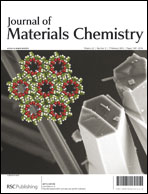On-demand serum-degradable amylopectin-based in situ gellable hydrogel
Abstract
This paper describes the hydrogels which are quickly degradable, even on-demand, by exposure to serum, as well as in situ gellable under mild conditions for cells. In addition, potential applications of these hydrogels to tissue engineering and regenerative medicine are also described. The hydrogels were produced from aqueous solution of


 Please wait while we load your content...
Please wait while we load your content...